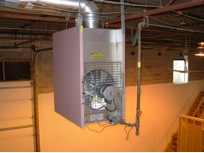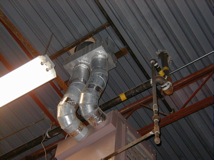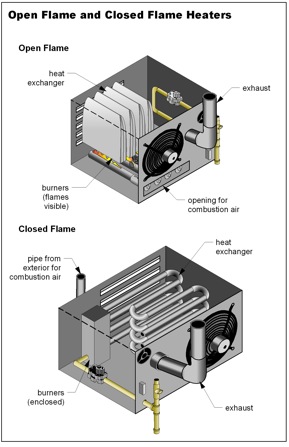When describing the heating systems in a commercial building, there are a number of variables to consider, including:
- The type of fuel used.
- The medium used for heating (air, water, steam).
- The burner configuration – open vs. closed flame.
- The presence of a heat exchanger – direct vs. indirect fired.
- The type of heat transfer – convection vs. radiant.
This article will discuss the difference between open flame and closed flame heating systems and when one would expect to find each type.
These types of heating systems are typically natural gas, propane or oil fired. With an open flame system you can see the flame. The air inside the building can come in contact with the flame. It has to as the building provides the combustion air.
A closed flame system, on the other hand, does not allow the air inside the building to interact with the flame. Closed flame heating systems typically use outside air for combustion.
Open flame systems are by far the most common. These would include most types of interior furnaces, boilers, or unit heaters. Closed flame systems would include certain types of high efficiency furnaces, boilers, unit heaters, radiant heaters, and all roof top units.
Open flame systems are typically used, as they are less expensive. The circumstances where closed flamed systems would be required involve buildings that contain explosive dust or vapours. For example, some types of woodworking or wood manufacturing plants would require closed flame systems because of the amount of sawdust generated inside. Another example would be near spray paint booths.
Another way to look at it is that closed flame heating systems are more energy efficient, as they use outdoor air for combustion. While this is true, it is typically not the reason for this type of equipment in the building.
By Richard Weldon – P.Eng, LEED AP


